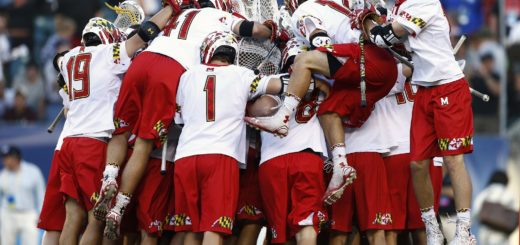SUNY Oswego Club Sports Funding Disproportionate
On Sunday, February 18th, SUNY Oswego female club athletes discussed the funding gap between male and female sports clubs with both the Student Association’s Public Relations Director Emily Stasko and Director of Diversity, Equality & Inclusion Eusebio Omar Van Reene.
Currently, SUNY Oswego has 208 clubs (and not all are sports). The Student Association (SA) is allowed $1,700,000 for all 208 clubs. Overall, the women’s sports club teams received 65% less funding this year than men’s sports club teams.
“We discovered this disparity with SA’s funding at the beginning of last fall and after we were unable to resolve for a fairer solution. We decided to bring it to the students to see how they felt about it and expose them to the numbers. With their help, we might figure out the best way to go about it,” said Stasko.
Stasko also said that for athletic sports teams, past performance can be taken into consideration when determining dollar contributions and should increase with better performance. This is the SA Senate’s effort to budget more effectively, as better performing teams need more funding.
However, SA’s budgeting is not always effective. Elena Kilgore of the women’s rugby team stated, “Performances change, you can go from a losing season to a winning season the next year and still not see an increase.”
Stasko added to Kilgore’s comments that “Without proper initial funding, many women’s teams cannot get into leagues in order to play… These women’s teams have no way to enter a league or obtain a record.” She questioned what records SA could use to base past performance off of. It was also noted that the athletes are very limited in the ways they can acceptably fundraise.
Sarah Rousell plays on the Women’s Club Hockey Team said, “The gap in funding has clearly given an advantage to the men’s teams over the women’s. This funding inequality significantly reduces the opportunities available for female student-athletes on campus,” said Rousell. “Considering that male and female teams are playing the same sport and have the same needs and requirements as the female teams, it could be seen as the school valuing male club sports and participants far more than females. This situation needs to be addressed and rectified. A $30,000 dollar gap in funding for the male hockey team over the women’s hockey team is inexcusable and I’m shocked that SUNY Oswego has allowed this gap to get as wide as it has.” said Rousell
Due to the lack of initial funding, the women’s club hockey team reports that they cannot enter a league. “We’re trying to join the same league as the men’s team but we just do not have the funds,” stated Rousell.
Currently, the most noticeable gaps between men’s and women’s club sports funding are seen in soccer, volleyball, rugby, hockey, and baseball/softball. Below are the figures between the men’s and women’s teams, along with percentage differences.
Club Soccer
2018 men’s budget: $4,500
2018 women’s budget: $2,650
women’s team receives 41.1% less
Club Volleyball
2018 men’s budget: $4,200
2018 women’s budget: $2,000
women’s team receives 52.4% less
Club Rugby
2018 men’s budget: $18,950
2018 women’s budget: $7,300
women’s team receives 61.5% less
Club Ice Hockey
2018 men’s budget: $37,500
2018 women’s budget: $7,200
women’s team receives 80.8% less
Club Baseball/Softball
2018 men’s budget: $11,250
2018 women’s budget: $1,500
women’s team receives 86.7% less
“The women’s club softball team was founded in fall 2016 and we’re in our second year,” According to team-member Amanda Plourde. “In the second club year, the budget allowance from SA is capped at $2,500,” said Plourde. However, currently, the women’s softball team only receives a little over half of that capped budget. “We need but are afraid to ask for $5,000 for our club. That would provide for everything we need. Currently, we have to share and buy own our equipment,” stated Laplante. Laplante applied for $2,000 for the coming third year which is $500 less than the maximum second-year club allowance. Laplante reports high attrition rates due to the severe lack of funding.
Allison Batchelor plays for the Women’s Club Softball Team, and also dances for Del Sarte. Del Sarte is a club that students can perform choreographed dances in a wide range of different music/dancing styles. Del Sarte is also one of the largest clubs on campus and according to Batchelor, “We don’t get enough funding to even rent a hall on campus so we can do our performances, we have to use The Oswego High School Theater and even then we still have to pay.”
“We feel the rubric is currently outdated,” said Stasko. According to Stasko, the rubric might work for non-sports clubs but it does not work when it comes to club sports because of the following: historical club spending in last two years, current club spending, the size of the club organizations (attrition rate), outreach to SUNY Oswego and our plans for the upcoming year.”
“The reason we are here today is that you cannot have one rubric that determines how 208 clubs should be funded. All clubs are unique, you have multi-cultural clubs, government clubs, and sports clubs and more. It’s virtually impossible to fund a sports club the same as you would for a music club,” according to Student Association member Van Reene. Van Reene pointed out that some female clubs are getting anywhere 41% to over 86% less funding than their male sports team counterparts. “Overall, if you take all the women’s clubs and add differences, total women average 65% less than their male counterparts in sports,” according to Van Reene. Van Reene also feels that the rubric is outdated and needs to be changed so that we can give women an equal opportunity to thrive like their male counterparts. “The time is now to take a stand on this and push our campus forward,” he said.
Additionally, most female teams cannot afford transportation services due to their lack of funding. They resort to driving themselves to tournaments or matches, oftentimes in their own vehicles or carpooling. With no room to be comfortable, it does affect
their ability to play well. “That’s never been an option for us, to rent a bus or even a van. We always have to recruit drivers from our team,” stated the Vice President of the Women’s Club Softball Team.
Student Association Public Relations Director Emily Stasko said that teams are reimbursed for gas but also feels that it’s not enough, especially for teams traveling cross-country for tournaments. For instance, the Women’s Rugby Team will be traveling to Rhode Island this season.
Another issue brought up at the meeting was that some of the Student Association financial positions are currently being held by the same people who run and organize clubs which receive SA funding. Those board members could be seen as influencing other board members to award their own clubs more money, thus creating a conflict of interest.
“I didn’t know how drastic the [funding] gap was until I attended this forum,” said Club Softball VP, Katie Johnson. Some attendees were not aware, but other women already knew of budgeting inequality between teams. “I had spoken with other Senators in the S.A and they had informed me that we’re getting significantly less funding than the baseball team,” Said Club Softball treasurer Jade Laplante.
Stasko and Reenen are working on the rubric. “We think it the best way to go about it since it is outdated,” Stasko said. “Things like how were allocating money, what’s fair, what’s unfair, who’s in positions that getting these votes at the budget council to give these teams that money,” she added. Stasko and Reenen are also working on a bill that they hope to get past that will benefit all clubs and plan on having an open forum for all club sports teams to review the bill before its presented.
For any updates follow @OswegoEqualPlay and use #EqualPayForEqualPlay






